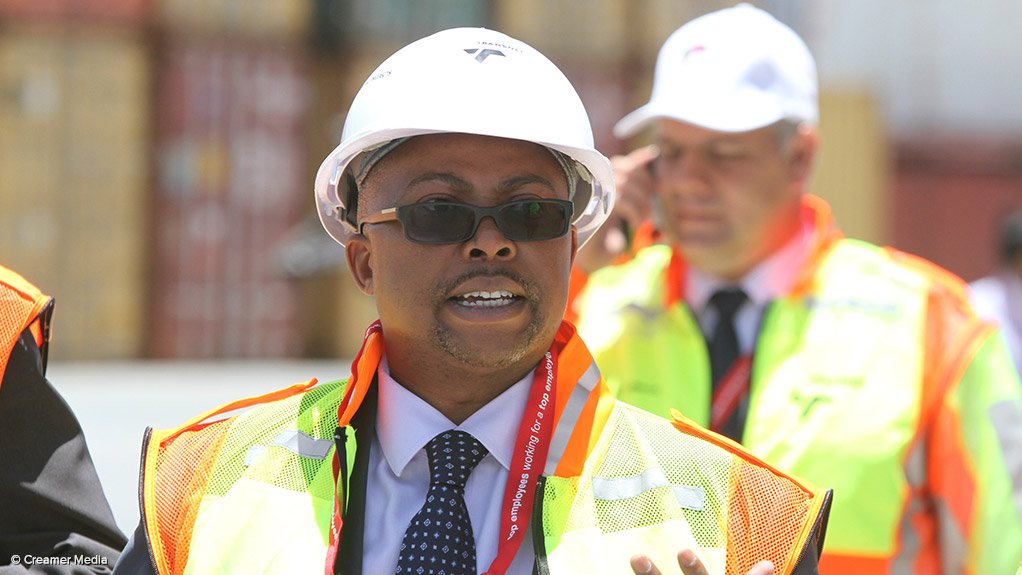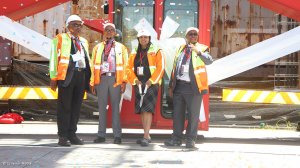State-owned freight logistics group Transnet formally opened its upgraded City Deep inland port on Thursday, reporting that its yearly container handling capacity had been doubled to 400 000 twenty-foot equivalent units (TEU) following an R800-million investment programme.
The terminal, which is situated just south of the Johannesburg central business district and in view of Transnet’s Carlton Centre head office, is the largest inland port in Africa and the fifth largest internationally. At peak, the terminal handles about 300 trucks and also offloads up to 10 trains a day.
Opened in 1977, it handles and consolidates 60% of the containers that either flow inland from the ports of Durban, Ngqura and Cape Town, or are exported from South Africa’s industrial heartland of Gauteng. It also acts as an exchange platform for trade into the rest of the Southern African Development Community.
Transnet acting CEO Siyabonga Gama said the expansion was in line with the group’s strategy of migrating rail-friendly cargo from road to rail, noting that train trips between City Deep and Durban had been reduced, over the past month, from over 27 hours previously to below 16 hours.
The investment also falls under government’s second strategic integrated project, or SIP 2, of the National Infrastructure Plan, which is designed to strengthen the logistics and transport corridor between KwaZulu-Natal, the Free State and Gauteng.
SIP 2 envisages various others investments, including at Maluti-a-Phofung special economic zone, in Harrismith, in the Free State, and new terminals, including the Tambo Springs inland port, which the Gauteng government envisages eventually becoming the largest inland port in Africa.
However, Gama made the case of City Deep remaining the “premier inland port through which we can grow and increase trade”.
He described the City Deep project – which involved investments in new container handling equipment, the installation of the Navis operating system, which is also used at Transnet seaports, the upgrading of existing infrastructure and the installation of a new gate and weighbridge system – as a milestone in the group’s bigger R500-million Market Demand Strategy (MDS).
To date, Transnet had investment nearly R110-billion under the MDS and planned to invest a further R340-billion to R380-billion over the coming decade based on “validated demand”. Transnet had initially envisaged investing up to R380-billion in seven years, but has since extended the MDS cycle to ten years, owing to low economic growth and commodity market weakness.
Its container business and automotive business, however, had performed relatively well, with automotive volumes increasing by 23% to 389 203 units in the first six months of its current financial year and container volumes rising 2.3% to over 2.3-million TEUs.
Gama urged mass retailers, in particular, to take advantage of the growing efficiency of Transnet’s rail and terminal systems and called on the private sector to begin matching the infrastructure investments being made by the utility with their own investments.
“A great number of our South African companies have lazy cash in their balance sheets, which we urge [should] be used as an investment to modernise their plants and make new expansionary investments so that the entire economy of our country can be lifted.”
EMAIL THIS ARTICLE SAVE THIS ARTICLE
To subscribe email subscriptions@creamermedia.co.za or click here
To advertise email advertising@creamermedia.co.za or click here
















